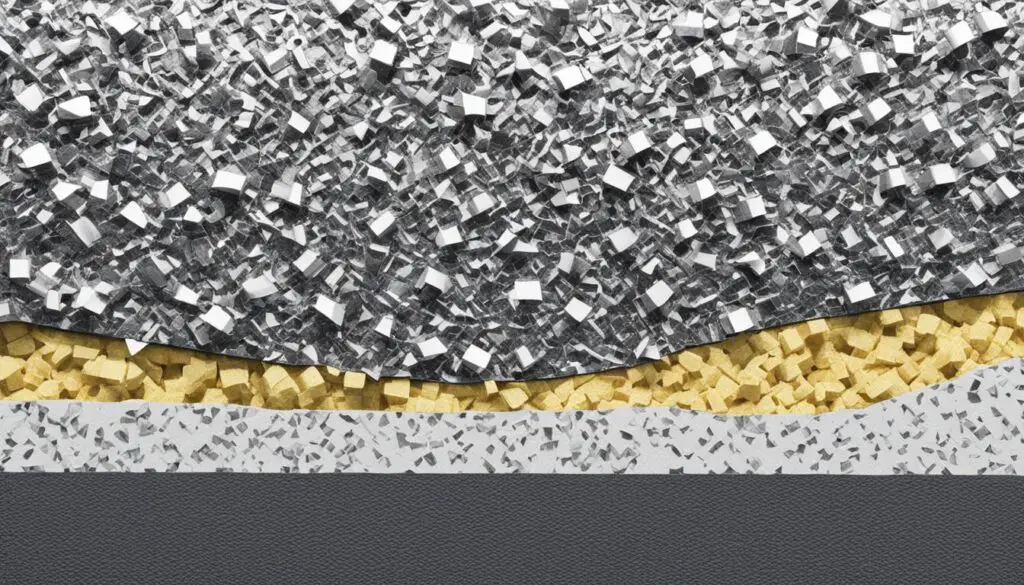
Silencing the Road: Noise Cancellation Innovations in Cars
Noise cancellation in cars has seen remarkable advancements, revolutionizing the driving experience by eliminating unwanted noise and creating a serene environment. Automakers have introduced innovative noise cancellation systems that employ cutting-edge technology, ensuring a quieter ride for drivers and passengers alike.
These advancements in noise cancellation technology have resulted in a transformative shift, allowing us to enjoy the blissful silence of the road. Through the use of active noise cancellation, insulation, and sound-deadening materials, automakers are continuously pushing boundaries to enhance the comfort and tranquility inside vehicles.
- Noise cancellation technology in cars has rapidly evolved, transforming the driving experience into a haven of quiet.
- Active noise cancellation systems use sensors to detect road noise and generate sound waves that cancel out unwanted sounds.
- Insulation and sound-deadening materials are strategically placed in cars to block external noise and reduce vibrations, resulting in a quieter environment.
- These innovations contribute to a more comfortable driving experience, reduced driver fatigue, and enhanced vehicle safety.
- As technology continues to progress, further advancements in noise cancellation can be expected, providing even quieter and more enjoyable journeys on the road.
Active Noise Cancellation Systems: Blocking Out the Noise
Active noise cancellation systems are revolutionizing noise reduction in cars. These advanced systems utilize strategically placed sensors to detect road noise, allowing the system to generate sound waves that cancel out unwanted sounds. By analyzing the frequency and intensity of the noise, active noise cancellation systems employ an opposite sound wave, effectively reducing the noise perceived inside the vehicle. This technology is particularly effective in blocking out low-frequency engine and road noises, resulting in a significantly quieter and more comfortable ride for both drivers and passengers.
To understand how active noise cancellation systems work, it is vital to comprehend the principles behind this innovative technology. When sensors detect road noise, they transmit the data to the system’s control unit, which quickly analyzes the noise characteristics. Based on this analysis, the system generates specific sound waves through the car’s audio system, utilizing speakers strategically positioned around the cabin. These sound waves counteract the incoming noise, ultimately reducing the noise experienced by the car’s occupants.
The benefits of active noise cancellation systems extend beyond mere sound reduction. By minimizing distracting and intrusive road noise, these systems enhance the overall driving experience, allowing occupants to enjoy a quieter and more serene environment. Reduced noise levels also contribute to decreased driver fatigue, improving driver concentration and potentially enhancing road safety.
“Active noise cancellation systems utilize sensors and sound wave technology to cancel out unwanted road noise, significantly improving the driving experience by creating a peaceful and quiet environment inside the car.”
How Sensors and Sound Waves Collaborate
The key components of an active noise cancellation system are the sensors and the sound wave generation technology. These work in tandem to achieve optimal noise reduction. Sensors are strategically placed throughout the vehicle to detect road noise, vibrations, and other external auditory cues. The data collected by the sensors is then processed by the system’s control unit, allowing it to generate the appropriate sound waves.
The generated sound waves are designed to destructively interfere with the incoming noise, effectively canceling it out. This is achieved through precise timing, frequency, and amplitude adjustments. As a result, the noise perceived by the occupants is significantly reduced, transforming the car into a haven free from the disturbances of the outside world.
The Impact of Active Noise Cancellation Systems on Driving Comfort
The integration of active noise cancellation systems in cars has a profound impact on driving comfort. By reducing road noise, these systems create a more enjoyable and relaxing driving environment. Whether it’s a long highway journey or navigating through a bustling city, the serene cabin allows drivers and passengers to immerse themselves in a premium audio experience or simply enjoy a peaceful atmosphere.
Beyond the immediate comfort benefits, active noise cancellation systems also have the potential to improve driving performance. With fewer external distractions, drivers can better focus on the road ahead, react more quickly to potential hazards, and ultimately enhance overall road safety.
Active Noise Cancellation System Comparison
| Car Manufacturer | Noise Cancellation System | Effectiveness | Features |
|---|---|---|---|
| Audi | Active Noise Cancellation+ | Excellent | – Adaptive sound control – Exterior noise reduction |
| Tesla | Active Noise Cancellation Pro | Superb | – Cabin sensing technology – Customizable soundscapes |
| BMW | Dynamic Sound Control | Great | – Amplification of desired sounds – Virtual engine sound |
| Mercedes-Benz | Active Noise Control | Exceptional | – Individualized sound settings – External noise reduction |
As automotive technology continues to advance, active noise cancellation systems are becoming increasingly sophisticated. Car manufacturers are continually refining their noise reduction technology to provide the most effective and seamless experience for drivers and passengers. With active noise cancellation systems, the sounds of the road can be silenced, allowing everyone inside the car to enjoy a more peaceful and enjoyable journey.

Insulation and Sound-Deadening Materials: Creating a Quiet Oasis
In addition to active noise cancellation systems, automakers are implementing insulation and sound-deadening materials to further enhance noise reduction in cars. These innovative materials are strategically placed in the vehicle’s structure, including the chassis, doors, windows, and floor, to minimize vibrations and block external noise from entering the cabin.
By creating a barrier between the interior and exterior of the car, these materials provide effective noise isolation, resulting in a quieter and more serene driving experience. Automakers continuously research and implement advanced technologies and materials to further improve noise cancellation capabilities in cars.
High-quality insulation and sound-deadening materials effectively dampen vibrations and reduce noise transmission, ensuring a more comfortable ride for drivers and passengers. These materials absorb sound waves, preventing them from bouncing off surfaces and causing excessive noise. Additionally, they help maintain a consistent temperature in the cabin, enhancing overall comfort and driving pleasure.
Advantages of Insulation and Sound-Deadening Materials
The use of insulation and sound-deadening materials in cars offers several advantages:
- Reduced road and engine noise for a quieter cabin environment
- Improved audio system performance with better sound quality
- Enhanced thermal insulation, maintaining a comfortable temperature inside the car
- Minimized vibrations, leading to a smoother and more enjoyable ride
- Increased privacy by blocking external noise from entering the cabin
These materials are carefully selected and integrated into the car’s design to achieve optimal noise reduction without compromising on safety or performance. By creating a quiet oasis inside the vehicle, automakers prioritize the comfort and well-being of their customers.
“Insulation and sound-deadening materials play a crucial role in creating a peaceful driving experience. By effectively reducing vibrations and blocking external noise, these materials enhance the overall comfort and serenity inside the car.”
As technology advances, automakers are continually exploring new materials and engineering techniques to further improve noise cancellation performance. The goal is to create a luxurious and tranquil environment for car occupants, even in the midst of a bustling urban landscape.

Conclusion
Noise cancellation technology in cars is revolutionizing the way we experience road noise. With the implementation of active noise cancellation systems, insulation, and sound-deadening materials, automakers are creating a quiet oasis within vehicles, providing a serene and peaceful environment for drivers and passengers alike. These advancements not only enhance the driving experience by reducing unwanted noise but also contribute to improved driver comfort, reduced fatigue, and enhanced vehicle safety.
By utilizing active noise cancellation systems, cars can effectively block out low-frequency engine and road noises, resulting in a quieter driving experience. The strategic placement of sensors and the generation of sound waves that cancel out unwanted noise ensures a more enjoyable journey on the road. In addition, insulation and sound-deadening materials create a barrier between the interior and exterior of the vehicle, isolating vibrations and minimizing external noise intrusion.
As noise cancellation technology continues to evolve, we can anticipate even further innovations in the future. Automakers are constantly researching and implementing new methods and materials to enhance noise reduction capabilities in cars. This ongoing commitment to improvement will further contribute to a quieter and more enjoyable driving experience, allowing drivers to fully immerse themselves in their journey and appreciate the benefits of a quiet environment.
FAQ
How does active noise cancellation work in cars?
Active noise cancellation systems in cars use strategically placed sensors to detect road noise and generate sound waves that cancel out unwanted sounds. By analyzing the frequency and intensity of the noise, the system creates an opposite sound wave, effectively reducing the noise perceived inside the vehicle.
What are the benefits of active noise cancellation in cars?
Active noise cancellation systems in cars provide a quieter and more comfortable ride for drivers and passengers. They are particularly effective in canceling out low-frequency engine and road noises, creating a serene environment for a peaceful driving experience.
How do insulation and sound-deadening materials contribute to noise reduction in cars?
Insulation and sound-deadening materials are strategically placed in the vehicle’s structure to minimize vibrations and block external noise from entering the cabin. By creating a barrier between the interior and exterior of the car, these materials provide effective noise isolation, resulting in a quieter and more serene driving experience.
What are the advantages of noise cancellation technology in cars?
Noise cancellation technology in cars transforms the way we experience road noise by creating a quiet oasis inside vehicles. In addition to a more comfortable driving experience, noise cancellation helps reduce driver fatigue and enhances vehicle safety by minimizing distractions caused by external noise.
